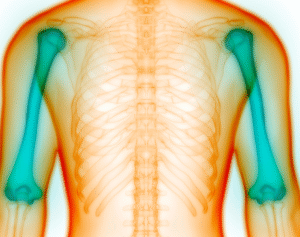Navigating Mobility Challenges: Understanding Walking Difficulties in Fibromyalgia
Navigating Mobility Challenges: Understanding Walking Difficulties in Fibromyalgia
Fibromyalgia is a chronic condition characterized by widespread musculoskeletal pain, fatigue, and tenderness in localized areas. While it does not directly cause paralysis or permanent loss of mobility, it can significantly impact an individual’s ability to walk and perform daily activities.
The Impact of Fibromyalgia on Mobility
Individuals with fibromyalgia often experience altered gait patterns and reduced walking capacity. Studies have shown that people with fibromyalgia tend to walk more slowly, with shorter stride lengths and lower cadence compared to those without the condition. This change in gait is similar to patterns observed in the elderly, indicating a premature decline in functional mobility.
Additionally, fibromyalgia patients may exhibit reduced range of motion in the lower extremities, contributing to decreased walking efficiency and increased fatigue. These factors can lead to a more conservative walking style, aimed at minimizing discomfort and the risk of falls.
Factors Contributing to Walking Difficulties
Several symptoms associated with fibromyalgia can exacerbate walking difficulties:
- Chronic Pain: Persistent pain in muscles and joints can make movement uncomfortable, leading to reduced physical activity.
- Fatigue: A hallmark symptom of fibromyalgia, fatigue can limit endurance and the ability to engage in prolonged walking or standing.
- Balance Issues: Impaired balance and coordination may increase the risk of falls, causing individuals to limit their mobility.
- Cognitive Impairments: Commonly referred to as “fibro fog,” cognitive difficulties can affect concentration and the ability to navigate environments safely.
Use of Mobility Aids
To manage walking difficulties, some individuals with fibromyalgia may benefit from using mobility aids such as canes, walkers, or wheelchairs. These tools can help conserve energy, reduce pain during movement, and provide stability. It’s important to note that the use of mobility aids should be based on individual needs and recommended by healthcare professionals.
Strategies to Improve Mobility
While fibromyalgia can pose challenges to mobility, several strategies can help improve walking ability and overall function:
- Physical Therapy: Engaging in tailored exercise programs can enhance strength, flexibility, and endurance.
- Aerobic Exercise: Low-impact activities like walking, swimming, or cycling can improve cardiovascular health and reduce pain.
- Balance Training: Exercises focusing on balance can decrease the risk of falls and increase confidence in movement.
- Pain Management: Utilizing medications or alternative therapies to control pain can facilitate increased activity levels.
- Energy Conservation: Learning to pace activities and incorporate rest periods can help manage fatigue.
Conclusion
While fibromyalgia does not directly cause a complete loss of the ability to walk, it can significantly impact mobility through various symptoms. By understanding these challenges and implementing appropriate strategies, individuals with fibromyalgia can work towards maintaining and improving their walking ability and overall quality of life.



